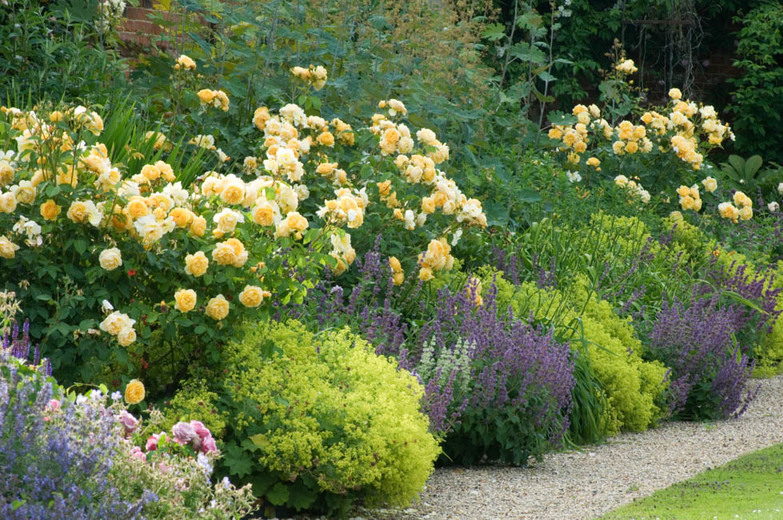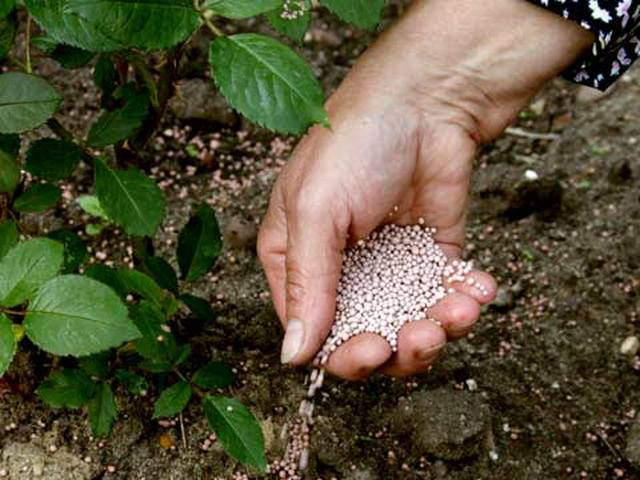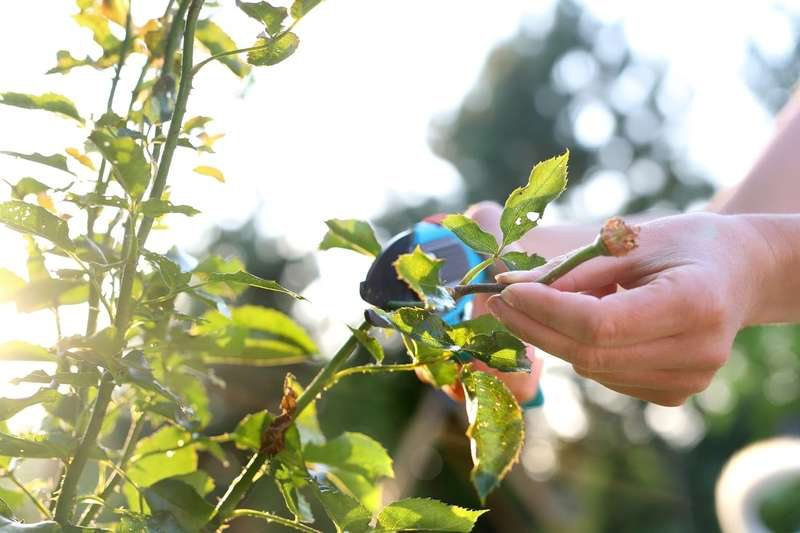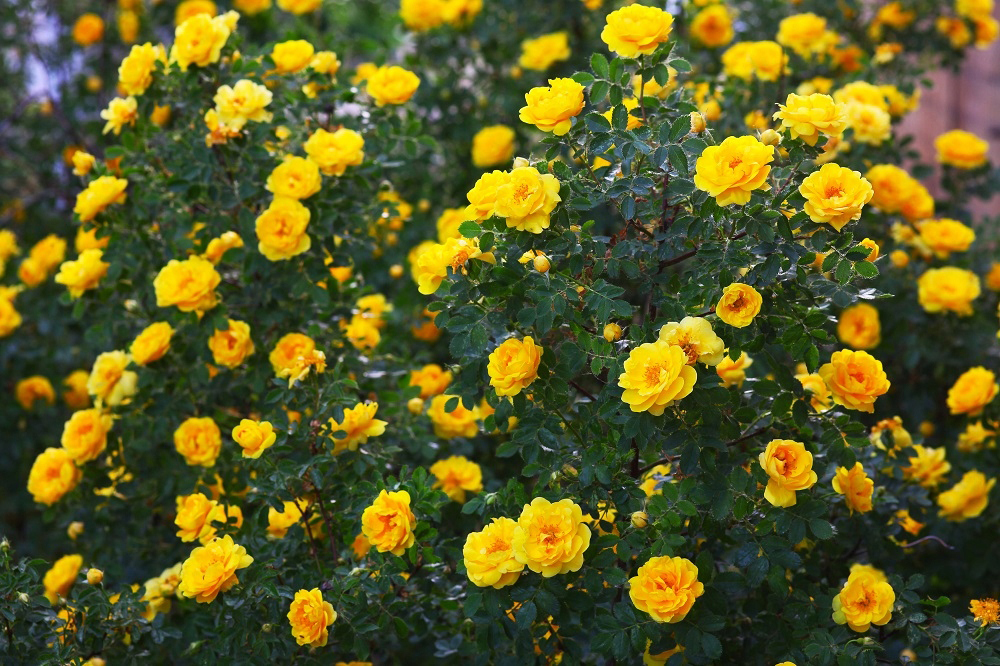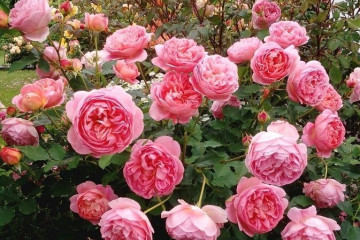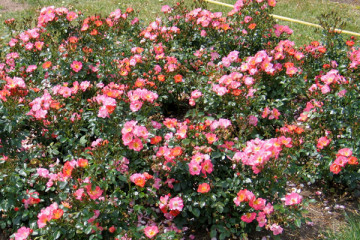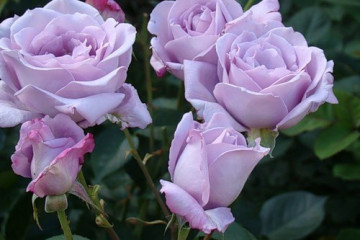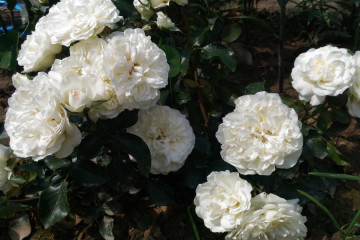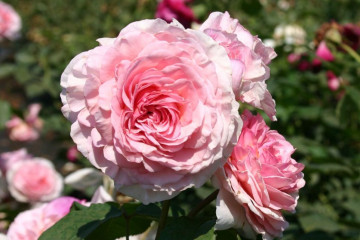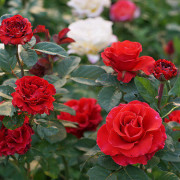Rose Golden Showers - climber characteristics
Content:
Climbing roses have a special charm, their abundant flowering is mesmerizing. Among the many varieties, you should pay attention to Golden Showers.
The biggest plus of this variety is shade tolerance, which allows it to be placed even in shady corners of the garden. It is this factor that makes this species so popular among gardeners and landscape designers.
Short description
Climbing rose Golden Shawers is a hybrid of a climber and a hybrid tea rose. It was bred in 1956 by the American breeder W.E.
The height of the shoots of this rose reaches up to 3 m. The leaves are dark green, glossy. With strong pruning, it is possible to grow as a bush.
The flowers are quite large, up to 10 cm in diameter, have a bright yellow color and a weakly pronounced pleasant aroma. As they bloom, the shade of the inflorescences tends to change to a paler one. Flowering begins in mid-July and lasts all summer, with the last peak sometimes occurring in early autumn.
Climbing rose Golden Shovers is one of the few continuous flowering roses that tolerate partial shade. But it should be borne in mind that the representative of this variety prefers a warm climate. In regions with temperatures below average, it is better to choose sunny places for its placement.
Advantages and disadvantages
Of course, this variety was not in vain for gardeners' favorites. He has many advantages:
- early and recurring flowering;
- fast growth;
- shade tolerance;
- you can give the appearance of a bush;
- pleasant scent of flowers.
The disadvantages include the following qualities:
- poor resistance to disease;
- thermophilicity;
- exactingness to the soil;
- the need for special pruning.
Rose Golden Showers in landscape design
Due to its high decorative qualities, this variety is often used to decorate gazebos, arches and walls of houses.
In bush form, this rose also looks great in combination with other plants, both shrubs and flowers.
Also, the formed plant can become a bright accent in the case of a single planting.
Growing and planting in open ground
Having decided to replenish your collection with a rose of the Golden Showers variety, the first step is to purchase a seedling of this plant. It is better to give preference to specimens in pots, the root system in this case will not suffer during transportation.
Since this variety is thermophilic, it is better to choose the spring period for planting. It is better not to rush and wait until the soil warms up well. When planted in autumn, the rose can suffer from low temperatures and even die.
When choosing a location for this flower, you should focus on the climate of the region. In areas with a warm climate, placement in partial shade is acceptable. For regions with colder planting, it is better to choose a sunny location.
You should first prepare the ground for future planting.The earth must be mixed with sand and manure, you can add nitroammofosk as additional feeding.
Before planting, the seedling should be removed from the container or packaging and placed in water at room temperature.
Planting step by step
The process of planting a rose in open ground consists of several stages:
- Preparation of a pit, the diameter of which is commensurate with the size of the root system of the seedling.
- Drainage preparation (a small layer of gravel, crushed stone).
- Filling the hole with some of the prepared soil.
- Placing a seedling (be sure to spread the roots over the soil surface).
- Filling the pit with the rest of the prepared soil.
- Watering.
- Hilling a seedling.
It is necessary to place the seedling when planting so that the grafting site is 4-5 cm below ground level.
The support should be installed at the planting stage. After completing the planting process, young shoots should be tied up immediately, placing them horizontally.
Plant care
For good growth and lush flowering, the plant must be properly cared for. This typically includes watering, feeding, pruning and winter protection. Rose Golden Showers has its own requirements.
Watering
This variety tolerates drought well, but waterlogging can adversely affect its growth and development.
Watering should be carried out once a week in the amount of 10-15 liters of water per bush. This rate can be increased only in very dry weather. Water for irrigation should be taken only at room temperature.
Top dressing
Golden Showers is quite demanding on the quality of the soil and the presence of a large amount of nutrients in it. In addition to the initial preparation of the soil during planting, it is also required to regularly feed the plant.
In the spring, nitrogen fertilizers are perfect for this. They will help the plant gain vegetative mass and prepare for flowering.
In the summer, it is better to make potassium-phosphorus fertilizing. The rose is also responsive to organic fertilizers during this period. Due to the timely receipt of the necessary nutrients, the plant will have enough strength for abundant flowering.
Pruning and replanting
For climbing roses, pruning is an important care item. It must be carried out correctly and in a timely manner.
The first pruning is done in the spring when the threat of frost has passed. Depending on the form in which the plant is grown, as a bush or as a climbing plant, it depends on how strong the pruning should be.
- In the case of growing by a bush, the shoots are shortened greatly, leaving only 3-4 buds.
- If the rose should remain climbing, the height of the cut of the shoots is greater, 7-8 buds should be left.
All dry shoots and those that have suffered after wintering must also be removed.
Autumn pruning consists in thinning the bush, if necessary, and removing diseased shoots. It should be carried out in such a way that before the onset of cold weather the plant has time to move away from this procedure and get stronger.
It is advisable to avoid transplanting climbing roses. Especially if the plant is already fixed on a support. But, if such a need nevertheless arises, you need to approach this process responsibly.
You can land in a new place in spring or summer. The spring period is preferable, but in this case it is worth preparing the plant in the fall. It is necessary to dig in the root system in advance in a circle and fill the resulting gap with sand. In the spring, all that remains is to remove the lump from the ground and move it to a new place.
If you need to transplant a rose in the summer, you need to remove all the flowers and shorten the shoots in half. After that, the plant should be moved to a new planting site.
Planting is carried out in the same way as for young seedlings. Is that the hole should be larger in diameter.
Wintering
Rose Golden Showers, like most roses, requires shelter for the winter. They begin to prepare the plant for wintering in September. To do this, the lashes are removed from the supports and bent to the ground. This will help them get used to the horizontal position. Before covering the bush, the shoots are pinned to the ground.
Bloom
Each plant has a period of active growth and dormancy. This should be guided by when caring for him.
The most active period for a climbing rose is the flowering period. For Golden Showers, it starts in mid-July and lasts almost until autumn. At this time, the rose requires increased care. You need to regularly fertilize and remove faded inflorescences. You should also watch out for watering, especially if the weather is dry.
Why may not bloom
Subject to all the rules for care, the Golden Showers rose will delight with abundant flowering. If she refuses to bloom, there may be several reasons for this:
- lack of light;
- lack of nutrients;
- poor watering;
- the presence of diseases and pests;
- improper trimming or neglect.
Only by analyzing all the possible causes, it will be possible to find a solution to the problem.
Reproduction
For new seedlings, the period from May to the end of summer is best suited. There are two propagation methods for climbing roses:
- cuttings;
- layering.
Propagation by cuttings can be divided into stages.
- The first step is to choose a healthy shoot, it is better to have faded, cut it off and divide it into parts so that each one has 2-3 buds. The lower cut is made at an angle of 45 °, the upper one is horizontal. The leaves are either removed all, or you can leave only the upper ones.
- Next, the prepared cuttings are placed in a stimulant solution to speed up the rooting process.
- After processing, it is planted in soil, which is pre-mixed with sand.
- The planted cuttings are covered with a glass jar.
It is better to resort to the method of propagation by layering in the spring. After removing the shelter, suitable shoots are not tied to a support, but left pinned to the ground. Further, you should only make sure that the soil in the place where the roots appear remains moist. Once the cuttings have taken root, they can be cut off from the mature plant and planted in their permanent place.
Diseases and pests
Golden Showers is not particularly resistant to diseases and pest attacks. The most common ailments to which she is exposed are powdery mildew and leaf spot. It can also be affected by various pests, most often aphids.
Only a healthy plant will fully grow and please the eye with abundant and long flowering.
Among the family of climbing roses, Golden Shovers compares favorably with the fact that it is able to grow and bloom in semi-shady places. But in areas with a cool climate, it is still better to choose a sunny place for it. The main thing is that the plant is not exposed to wind and drafts.
This species is responsive to fertilizers, both mineral and organic. They should be applied in the spring and throughout the summer until the end of the flowering period.
Pruning is very important for this variety. It must be carried out in a timely manner and correctly. Do not forget that wilted inflorescences should be regularly removed during the flowering period.
Periodic treatment for pests and diseases is necessary. It will keep the plant healthy and give it the opportunity to fully develop.With proper care, Golden Shovers will delight the eye with its lush and aromatic bloom throughout the summer.


